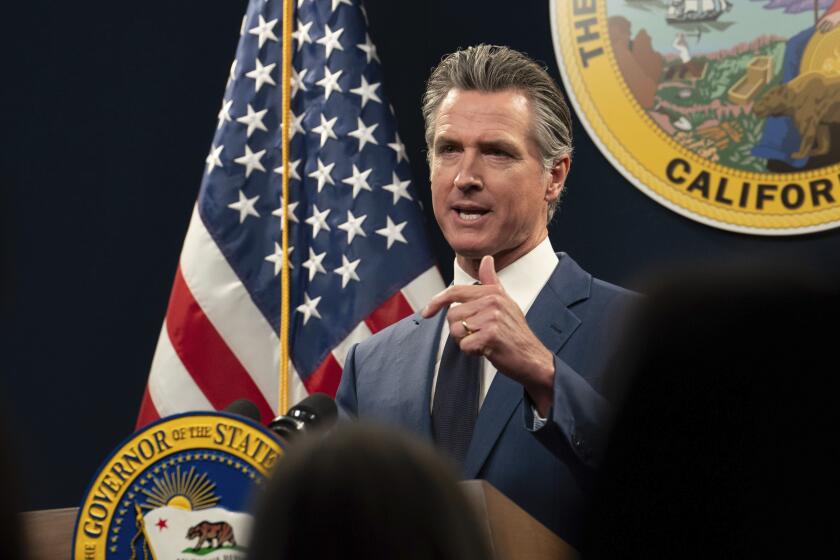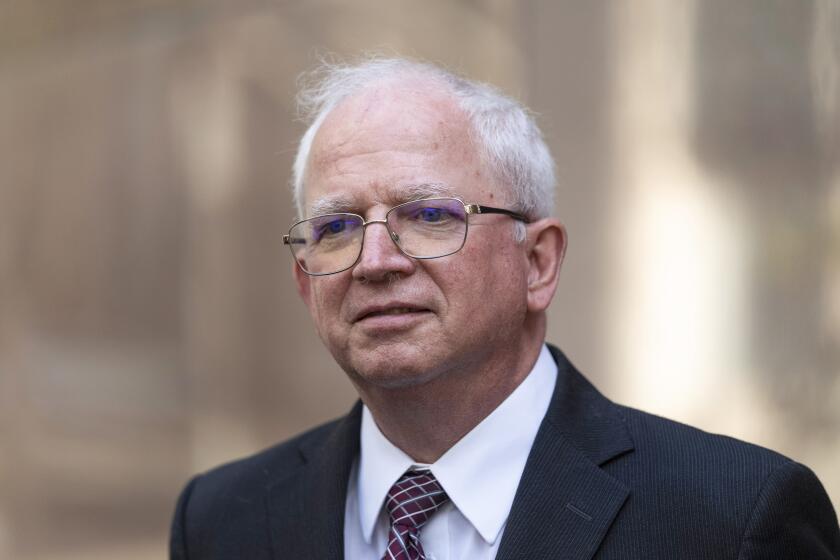High Court Bars Police Search Tied to Anonymous Tip
In a rare rebuff to police, the Supreme Court ruled Tuesday that an officer may not stop and frisk a pedestrian based only on an anonymous caller’s tip.
Instead, the justices reaffirmed the Constitution’s protection against unreasonable searches and stressed that officers need specific, reliable evidence of some wrongdoing before they stop a person on the street.
The surprising 9-0 ruling threw out gun-wielding charges against a black youth in Miami who was frisked and arrested at a bus stop.
Some legal experts said that Tuesday’s decision may well reflect the justices’ heightened concern over unrestrained police power. It came amid a backdrop of police shootings of innocent, unarmed black civilians in New York City and a corruption scandal in the anti-gang unit of the Los Angeles Police Department.
“This sends an important message that there are limits on what the police can do,” said University of Iowa law professor James J. Tomkovicz, who filed a brief on behalf of the American Civil Liberties Union. “This decision, because it is unanimous, emphatically says the 4th Amendment still means something. What’s happened in New York and Los Angeles has made clear there are risks to ignoring the 4th Amendment.”
But a national police leader called the ruling baffling and said that it would leave officers and the public more vulnerable to gun-toting thugs.
In the Miami case, an anonymous caller had reported a black male wearing a plaid shirt near a pawnshop on 183rd Street, saying that the man had a hidden gun. Six minutes later, Officer Carmen Anderson spotted a black male who fit that description and ordered him to put his hands on the bus shelter. She noticed a gun sticking from his left pocket.
Even though the tip proved to be accurate, Officer Anderson did not have specific details that could be confirmed as reliable before the search, the court concluded.
In the past, the court has said that searches can be triggered by anonymous tips but only when police can show that they are acting on reliable information. It is unclear how frequently police respond to anonymous callers directing them to a crime. In many instances, a regular informant proves the reliability of his tips.
In this instance, the single, brief phone message “left the police without a clue concerning the caller’s knowledge or credibility,” said Justice Ruth Bader Ginsburg. “The 4th Amendment is not so easily satisfied.”
A lenient rule for the use of anonymous tips could allow anonymous callers to target innocent people for embarrassing searches, she added.
Tuesday’s ruling was both narrow and hedged. It would be a different matter, Ginsburg said, if the youth had been seen in an airport or on school grounds. There, safety concerns are greater and individuals cannot expect to have the same standard of privacy.
And had the Miami caller given a name and reported other details that could have been checked, the search likely would have been upheld, the court said.
Nonetheless, lawyers on both sides were taken aback by the unanimous ruling.
“This is not the kind of ruling you expect out of this Supreme Court,” said Florida Assistant Atty. Gen. Michael Neimand.
A state trial judge in 1996 had suppressed the gun evidence against the youth, identified only as “J.L.,” and the Florida Supreme Court agreed in a divided ruling two years ago.
When the state appealed to the Supreme Court, it had the backing of top lawyers in 33 states, including California. They argued that the tip in this case was specific enough to be reliable. They also said that the court should give police greater leeway when dealing with concealed weapons.
That prompted lawyers for the National Rifle Assn. to join the case (Florida vs. J.L., 98-1993) on the side of the youth and the ACLU. In a friend-of-the-court brief, the NRA argued against a “firearms exception” to the normal rule that citizens should not be stopped and frisked unless police have evidence of a crime in progress.
However, a police leader said that officers need the authority to protect themselves and the public on the streets.
“We are disappointed and, frankly, very baffled by the court’s decision,” said Robert T. Scully, executive director of the National Assn. of Police Organizations. From 1988 to 1997, 92% of the 688 officers killed in the line of duty were killed with firearms, he said.
“We asked the court to adopt a policy of allowing police officers to seize and disarm those individuals presenting a serious risk of injury or death to the officer and the public,” Scully said, “and we continue to believe that an anonymous informant’s detailed description of an armed suspect’s clothing and location, when subsequently verified by police, should be enough to establish reasonable suspicion of criminal activity. Time will only tell the extent of the damage of this decision.”
Over the last decade, law enforcement leaders have rarely seen the need to criticize the high court. The justices have regularly given officers greater leeway to conduct searches, particularly in cases involving drugs or cars.
In January, the court said that it is reasonable for police to chase and stop a person who suddenly runs away at their approach. The 5-4 ruling reinstated drug charges against a Chicago man who fled when a police cruiser turned a corner.
This term’s biggest test of police power comes before the court next month, when the justices will hear arguments on the Miranda rule.
Since 1966, police have been required to tell suspects of their rights to remain silent or to have a lawyer present before they are questioned. The Supreme Court, during the more liberal era when that case was decided, worried that police would browbeat innocent people into confessing to crimes.
Last year, however, a U.S. court of appeals voiced the opposite concern: that the guilty should not go free because they confessed before their rights were read to them. The court will take up Miranda warnings on April 19.
More to Read
Get the L.A. Times Politics newsletter
Deeply reported insights into legislation, politics and policy from Sacramento, Washington and beyond. In your inbox three times per week.
You may occasionally receive promotional content from the Los Angeles Times.





